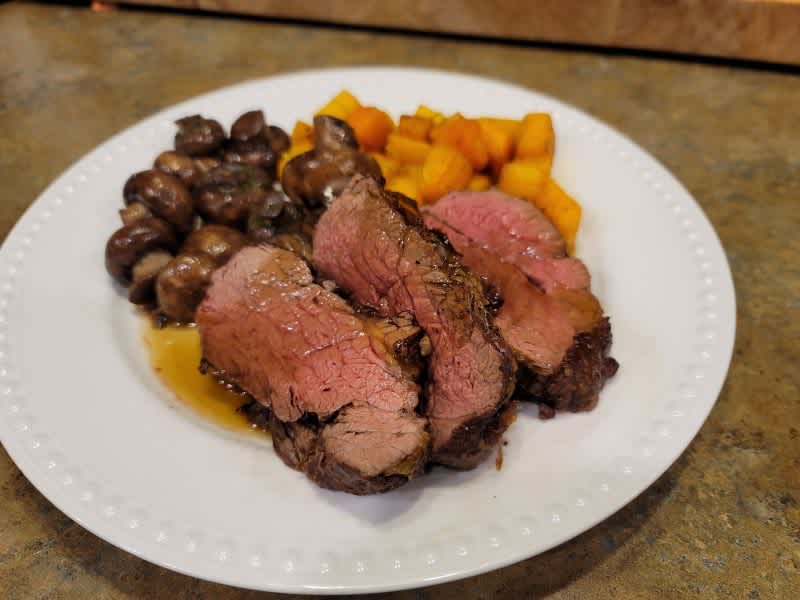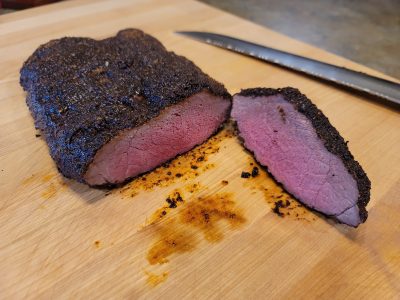Everett Headley 02.28.23

It is hard to say if I take more satisfaction in sourcing or preparing my wild game. I hunt for food, but also for the many other ways it impacts my soul. It brings me great pride that I am self-sufficient in this area of my life. It is equally pleasing to me that my wild proteins best anything I can buy. It is a particular delight when I can plate a meal for someone who has sworn off wild game and convert them back into the fold. There was a time when wild game was valued so highly, it was all that the elite restaurants served. If you were to find an early copy of James Beard’s cookbooks you will find squab, squirrel, and duck recipes. Now he is the namesake for one of the most prestigious culinary awards. Small steps in the right direction will quickly make changes in your meal preparation.

Take a Class.
Elevating your cooking doesn’t require attending le Cordon Bleu, but if you can manage it an online course will give you fundamentals to build on. It will also expose new methods, styles of cooking, and how to combine flavors. Salt is foundational to cooking, but there are many types and their application can greatly improve flavors. Choosing side dishes that help to balance the palate is often overlooked. A traditional “meat and potatoes” approach can become herb butter basted sirloin with garlic-parmesan mashed potatoes.

Cooking starts in the field.
The importance of fieldcare cannot be overstated. If an animal is not well cared for after the shot, there will be little later on to cure its gaminess. A well placed shot in the vitals prevents a long chase which can build up lactic acid that can flavor meat. However, waywardly shot animals can still be recovered and the body tended to so it isn’t tainted. Removing the hide, separating quarters and muscle groups (depending on the size of the game), and cooling it on ice (not water) is the priority. Nearly everyone who tells me the antelope they harvested tasted off left the hide on until they got it home. A freshly killed antelope stinks like a moldy bag of corn chips and I’m not sure why. But I have yet to find any fare better than an antelope tenderloin. On an oryx hunt on White Sands Missile Range the temperature was 95 F, but I was prepared with coolers full of ice. Less than an hour after my shot all four quarters and a couple of trim bags were safely on ice. Upland and Waterfowl are the exception to these rules, but shouldn’t be left long before they are likewise prepared for the freezer.
Don’t overcook Your cuts
My rule of thumb is to cook wildgame to rare or 125 F. You can use the “touch test” method comparing different parts of your hand to the firmness of the meat. This is wildly subjective and difficult for new chefs to perfect. Instead, buy a probe thermometer that will instantly read the temperature. When it reaches your desired temperature, remove from the heat source but continue to watch your probe. The temperature will continue to rise, a process known as carryover. For those concerned about disease, the probability is low in ungulates and slightly higher in predators like bears. A sous vide can bring these meats to a safe temperature without drying them out.

Learn the reverse sear.
Thicker cut steaks and loins respond very nicely to this method. The usual course is to place them on a grill, but by the time they cook through the outside is charred and tough or the entire cut is dry. A reverse sear allows the chef to bring the internal temperature up as desired and finish in a hot (preferably cast iron) pan to achieve perfect browning (caramelization). Start by seasoning the outside and then placing on a pan in the oven. Using the probe thermometer you purchased earlier, monitor until the temperature is five degrees lower than the target. (remember carryover). Allow it to rest for about five minutes. Then on a preheated pan, cook both sides until browned. The result is tender and flavorful.

Don’t be afraid to experiment.
None of us want to ruin any game. We know the expenditure to bring it to the table. But the few inedible results are worth trying new combinations of spices and expanding your cooking skills. It is rare when something is a complete failure and can’t be served. I follow a recipe the first time I make something new, but add my notes and “flair.” By the third and fourth time, I won’t even use a measuring spoon and just cook to my taste. And, after all, that is what really matters: how your hunted game tastes to you.

